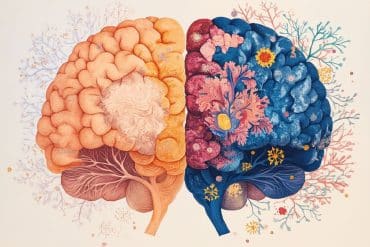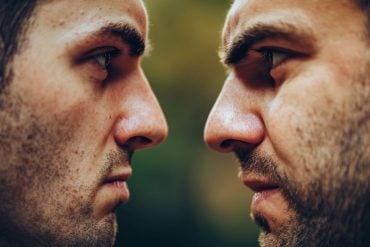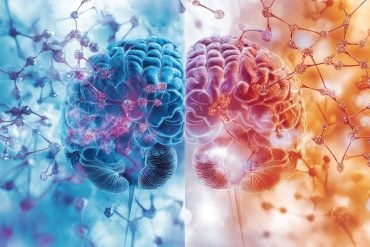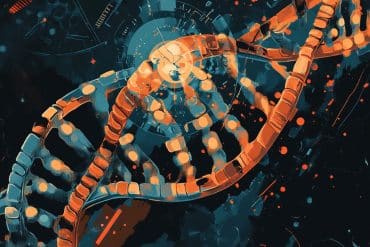Summary: A new EEG study reveals when activity in the dorsolateral prefrontal cortex is suppressed, cravings for high calorie food increases.
Source: University of Waterloo.
A newly published study from the University of Waterloo shows that when activity in a specific part of the brain is suppressed, our desire for high-calorie foods increases.
The investigators found that when they temporarily decreased activity in the dorsolateral prefrontal cortex – the brain network responsible for self-control – participants evaluated high-calorie snacks more positively, paid more attention to appealing images of such foods, and reported stronger urges to eat them than usual.
“We used a technique called transcranial magnetic stimulation to temporarily suppress the operation of a part of the brain that is involved in inhibition, known as the dorsolateral prefrontal cortex,” said Peter Hall, professor of Public Health and Health Systems and co-author of the study. “This resulted in increased attention to high-calorie food images, as well as stronger cravings for and more consumption of such foods when given an opportunity to sample them.”
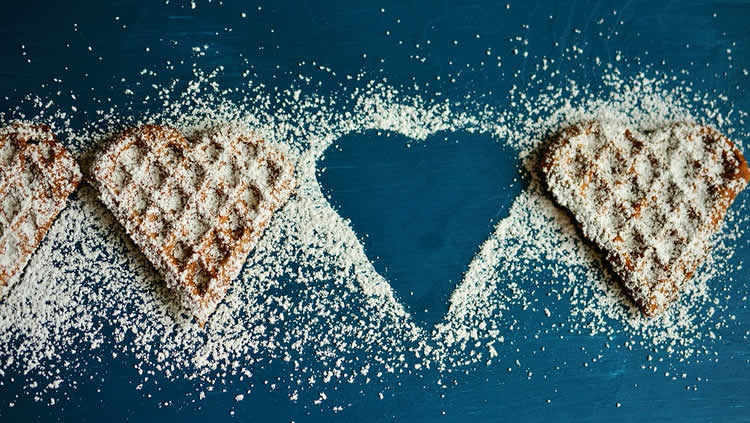
The study involved 28 young adult females who reported frequent cravings for high-calorie foods but were otherwise healthy. Eighty-nine percent of the participants consumed more food after real suppressive stimulation than after a placebo stimulation.
“Several lifestyle factors affect the function of the dorsolateral prefrontal cortex,” said Cassandra Lowe, lead author of the study and a PhD graduate from Waterloo’s School of Public Health. “For example, aerobic exercise has been shown to enhance it, while lack of sleep and stress can impair it – so there may be a link between these lifestyle factors and overeating via their impacts on the brain.”
Source: Ryon Jones – University of Waterloo
Publisher: Organized by NeuroscienceNews.com.
Image Source: NeuroscienceNews.com image is in the public domain.
Original Research: Abstract for “The neurocognitive mechanisms underlying food cravings and snack food consumption. A combined continuous theta burst stimulation (cTBS) and EEG study” by Cassandra J. Lowe, William R. Staines, Felicia Manocchio, and Peter A. Hall in NeuroImage. Published July 12 2018.
doi:10.1016/j.neuroimage.2018.05.013
[cbtabs][cbtab title=”MLA”]University of Waterloo”How the Brain Controls Food Cravings.” NeuroscienceNews. NeuroscienceNews, 23 July 2018.
<https://neurosciencenews.com/neuroscience-food-cravings-9598/>.[/cbtab][cbtab title=”APA”]University of Waterloo(2018, July 23). How the Brain Controls Food Cravings. NeuroscienceNews. Retrieved July 23, 2018 from https://neurosciencenews.com/neuroscience-food-cravings-9598/[/cbtab][cbtab title=”Chicago”]University of Waterloo”How the Brain Controls Food Cravings.” https://neurosciencenews.com/neuroscience-food-cravings-9598/ (accessed July 23, 2018).[/cbtab][/cbtabs]
Abstract
The neurocognitive mechanisms underlying food cravings and snack food consumption. A combined continuous theta burst stimulation (cTBS) and EEG study
Regulation of food cravings is thought to be critical for modulating eating behavior, yet we do not fully understand the mechanisms by which cognitive control operates in the eating context. The current study combined rTMS and EEG paradigms to examine the causal role of the left dorsolateral prefrontal cortex (dlPFC) in modulating visceral and behavioral responses to high calorie foods, and the mediational mechanisms underlying this relation. 28 right-handed female participants received both active and sham continuous theta burst stimulation (cTBS; a rTMS variant used to decrease cortical activity) targeting the left dlPFC in a counterbalanced order. Prior to and following each stimulation session participants completed a flanker and food-cue presentation (high and low calorie food) task. Following cTBS participants had the opportunity to consume both high and low calorie foods during a taste test. Findings revealed a reliable effect of cTBS on food consumption, such that participants selectively ingested significantly more calories from appetitive calorie dense snack foods following active relative to sham cTBS; this effect did not translate to control (low calorie) food consumption. In addition, attenuation of dlPFC activity resulted in the significant increase in N2 amplitude and P3b latency to incongruent flanker trials, and the selective significant increase in the P3a amplitude to and P3a amplitude bias for high calorie food stimuli. Results from the parallel mediation analysis revealed that only the indirect effect of flanker task performance was significant; the indirect effects of stimulation induced changes in the P3 bias for high calorie foods, the urge to consume high calorie foods, and the general liking ratings for high calorie foods were not significant. These findings confirm the causal role of the left dlPFC in the modulation of calorie dense food consumption via inhibitory control capacity.



